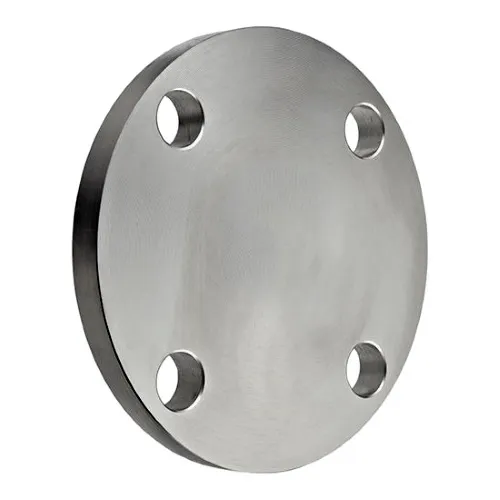-
Cangzhou Yulong Steel Co., Ltd.
-
Phone:
+86 13303177267 -
Email:
admin@ylsteelfittings.com
- English
- Arabic
- Italian
- Spanish
- Portuguese
- German
- kazakh
- Persian
- Greek
- French
- Russian
- Polish
- Thai
- Indonesian
- Vietnamese
- Zulu
- Korean
- Uzbek
- Hindi
- Serbian
- Malay
- Ukrainian
- Gujarati
- Haitian Creole
- hausa
- hawaiian
- Hebrew
- Miao
- Hungarian
- Icelandic
- igbo
- irish
- Japanese
- Javanese
- Kannada
- Khmer
- Rwandese
- Afrikaans
- Albanian
- Amharic
- Armenian
- Azerbaijani
- Basque
- Belarusian
- Bengali
- Bosnian
- Bulgarian
- Catalan
- Cebuano
- China
- China (Taiwan)
- Corsican
- Croatian
- Czech
- Danish
- Esperanto
- Estonian
- Finnish
- Frisian
- Galician
- Georgian
- Kurdish
- Kyrgyz
- Lao
- Latin
- Latvian
- Lithuanian
- Luxembourgish
- Macedonian
- Malgashi
- Malayalam
- Maltese
- Maori
- Marathi
- Mongolian
- Myanmar
- Nepali
- Norwegian
- Norwegian
- Occitan
- Pashto
- Dutch
- Punjabi
- Romanian
- Samoan
- Scottish Gaelic
- Sesotho
- Shona
- Sindhi
- Sinhala
- Slovak
- Slovenian
- Somali
- Sundanese
- Swahili
- Swedish
- Tagalog
- Tajik
- Tamil
- Tatar
- Telugu
- Turkish
- Turkmen
- Urdu
- Uighur
- Welsh
- Bantu
- Yiddish
- Yoruba

Dec . 04, 2024 23:47 Back to list
API 5L X42 Pipe Specifications and Standard Overview for Pipeline Applications
Understanding API 5L X42 Pipe Specification An Overview
The API 5L X42 pipe specification is a critical standard in the oil and gas industry, particularly for the transportation of oil and gas through pipelines. Established by the American Petroleum Institute (API), this specification sets the requirements for the manufacture of line pipe that is used in the transmission of petroleum and natural gas. In this article, we will delve into the key aspects of the API 5L X42 specification, including its material properties, applications, and the significance of compliance with this standard.
Material Properties
API 5L X42 is a type of line pipe steel that denotes the minimum yield strength of 42,000 psi (pounds per square inch). The designation X signifies that it is meant for high-pressure applications, making it suitable for the demanding conditions found in oil and gas transmission systems. Pipes manufactured under this specification can be produced in various sizes and thicknesses, generally ranging from 2 inches to 36 inches in diameter.
The chemical composition of X42 pipe typically includes carbon, manganese, phosphorus, sulfur, and silicon. The alloying elements are carefully controlled to enhance specific characteristics such as weldability, corrosion resistance, and strength. This makes X42 an ideal choice for sour service applications, where hydrogen sulfide is present and can lead to issues like sulfide stress cracking.
Manufacturing Process
The production of API 5L X42 pipes involves several key steps. Initially, steel billets are heated and then processed through a series of mechanical processes such as extrusion or rolling. The pipes may be produced using either seamless or welded techniques. Seamless pipes are created by piercing and elongating the billet into a hollow shape, offering superior strength and reliability. On the other hand, welded pipes are formed from flat plates that are rolled and welded along the seam.
Regardless of the manufacturing technique, every pipe must pass rigorous quality tests, including non-destructive testing methods like ultrasonic and radiographic inspections. These tests are essential to ensure the integrity and reliability of the pipes, particularly under high-pressure conditions.
api 5l x42 pipe specification

Applications of API 5L X42 Pipes
API 5L X42 pipes are widely used across various applications in the oil and gas industry. Primarily, they serve as the backbone of pipeline systems, facilitating the long-distance transportation of crude oil, natural gas, and refined products. They are employed in both onshore and offshore pipelines and are suitable for use in pipelines that operate under high-pressure conditions.
In addition to oil and gas applications, API X42 pipes also find utility in water distribution systems, structural applications in buildings, and even in geothermal energy sectors. Their robust nature and reliability make them a preferred choice for engineers and project managers alike.
Compliance and Standards
Compliance with the API 5L X42 specification is critical for manufacturers and users alike. Adherence to these standards ensures that the pipes meet the necessary safety requirements and are capable of performing reliably in the field. Non-compliance can lead to catastrophic failures, resulting in loss of resources, environmental damage, and potential hazards to human life.
Moreover, API certification is often a prerequisite for contractors bidding on major projects in the oil and gas industry. It establishes credibility and assures stakeholders of the quality and safety of the materials being used.
Conclusion
In summary, the API 5L X42 pipe specification plays a vital role in the oil and gas industry by providing a framework for the manufacturing and usage of line pipes. Understanding its material properties, applications, and the importance of compliance with this specification is essential for anyone involved in the industry. As energy demands continue to grow and the need for efficient transportation of hydrocarbons increases, API 5L X42 remains a cornerstone of pipeline infrastructure, ensuring safe, reliable, and efficient delivery of resources across vast distances. Whether in traditional energy projects or emerging renewable energy applications, this specification will undoubtedly continue to be a significant standard in the years to come.
Latest news
-
ANSI 150P SS304 SO FLANGE
NewsFeb.14,2025
-
ASTM A333GR6 STEEL PIPE
NewsJan.20,2025
-
ANSI B16.5 WELDING NECK FLANGE
NewsJan.15,2026
-
ANSI B16.5 SLIP-ON FLANGE
NewsApr.19,2024
-
SABS 1123 FLANGE
NewsJan.15,2025
-
DIN86044 PLATE FLANGE
NewsApr.19,2024
-
DIN2527 BLIND FLANGE
NewsApr.12,2024
-
JIS B2311 Butt-Welding Fittings LR/SR 45°/90° /180°Seamless/Weld
NewsApr.23,2024











